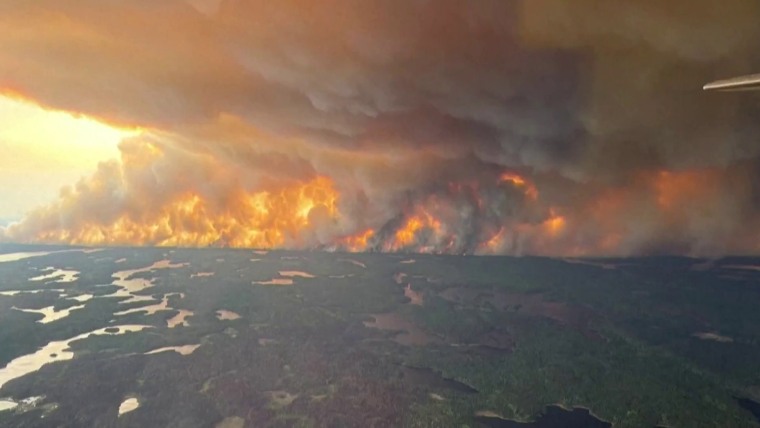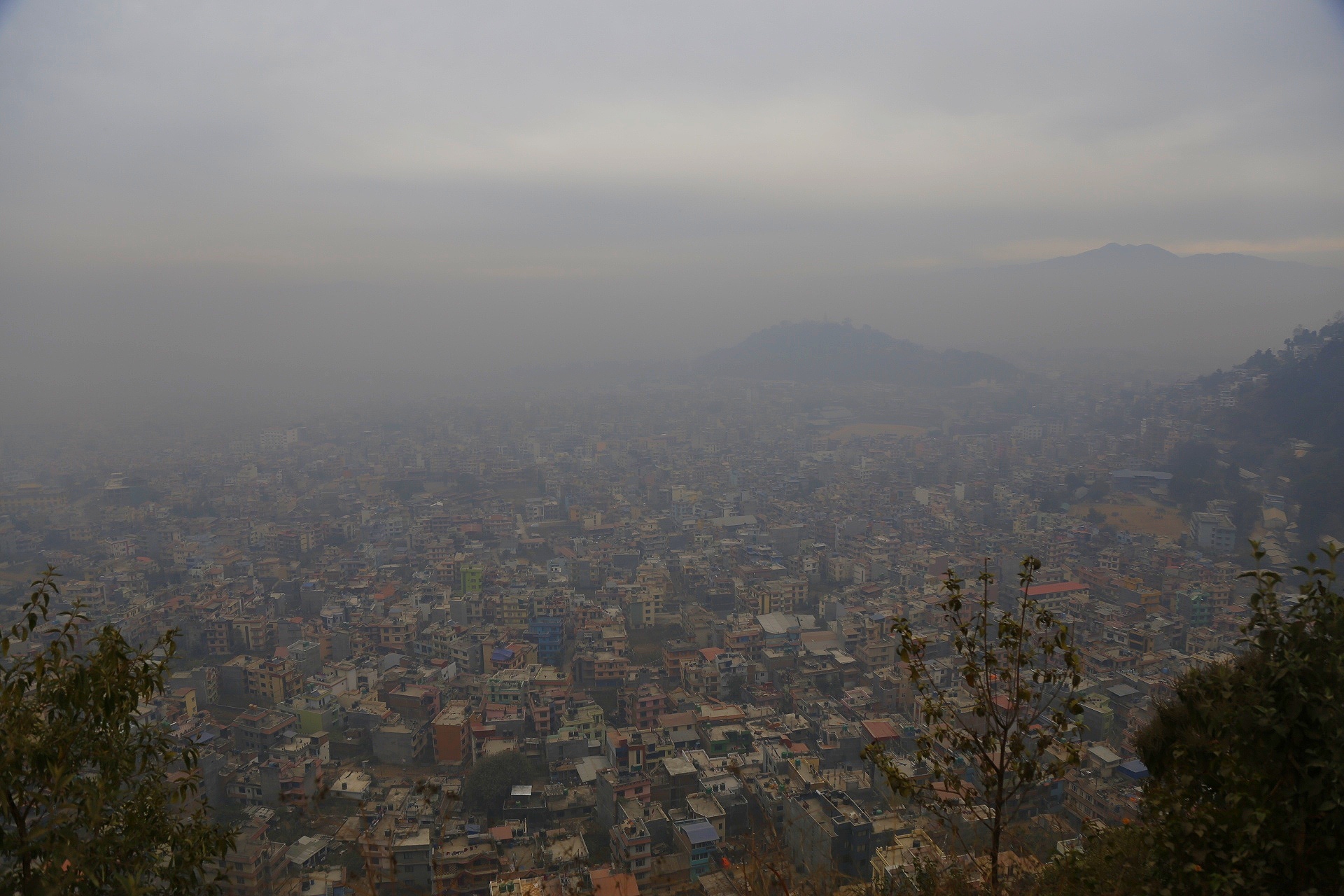Report on Air Quality Action Day in Northern Indiana and its Relation to Sustainable Development Goals
1.0 Executive Summary
The Indiana Department of Environmental Management (IDEM) has issued an Air Quality Action Day (AQAD) for northern Indiana, effective from Friday through midnight on Saturday, August 2. This alert, prompted by smoke from Canadian wildfires, highlights critical challenges related to several United Nations Sustainable Development Goals (SDGs), particularly SDG 3 (Good Health and Well-being), SDG 11 (Sustainable Cities and Communities), and SDG 13 (Climate Action).
2.0 Public Health Impact and Alignment with SDG 3: Good Health and Well-being
The primary driver for the AQAD is the forecasted degradation of air quality, which directly threatens public health and undermines the objectives of SDG 3. The alert is a critical measure to protect public health by mitigating exposure to harmful pollutants.
- Health Advisory: Ozone and fine particulate matter levels are projected to reach the “Unhealthy for Sensitive Groups” (Orange) range on the Air Quality Index (AQI).
- SDG 3 Target 3.9: This event directly relates to the goal of substantially reducing the number of deaths and illnesses from hazardous air pollution. The AQAD serves as a crucial public health intervention to protect vulnerable populations.
3.0 Urban Environment and SDG 11: Sustainable Cities and Communities
The widespread nature of the alert underscores the vulnerability of urban areas to transboundary environmental hazards, a key concern for SDG 11, which aims to make cities inclusive, safe, resilient, and sustainable.
3.1 Affected Municipalities
The AQAD is in effect for numerous communities across northeast, north-central, and northwestern Indiana, challenging the resilience targets of SDG 11. Affected cities include:
- Angola
- Auburn
- Decatur
- Fort Wayne
- Hartford
- Huntington
- LaGrange
- Marion
- Portland
- Wabash
4.0 Environmental Drivers and Connection to SDG 13 & SDG 15
The root cause of the air quality degradation provides a clear link to broader global environmental challenges addressed by the SDGs.
- SDG 13 (Climate Action): The smoke originates from Canadian wildfires, a phenomenon often intensified by climate change. This incident serves as a tangible example of the cross-border impacts of climate-related disasters, emphasizing the need for urgent global climate action.
- SDG 15 (Life on Land): The wildfires themselves represent a significant threat to terrestrial ecosystems, directly contravening the goals of SDG 15 to protect and restore forests and halt biodiversity loss.
5.0 Information Dissemination and Public Resources
Informing the public is a key component of mitigating health risks and building community resilience. IDEM provides resources for residents to stay informed, which aligns with the SDG principle of ensuring public access to information.
- Monitoring Tool: Residents can access real-time air quality data for all Indiana counties via the SmogWatch.IN.gov portal.
- Empowering Citizens: Providing accessible data empowers individuals to take protective measures, contributing to the overall health and safety of the community (SDG 3 and SDG 11).
1. Which SDGs are addressed or connected to the issues highlighted in the article?
SDG 3: Good Health and Well-being
- The article directly addresses public health by reporting on an “Air Quality Action Day” (AQAD). The warning that ozone levels are expected to be in the “Unhealthy for Sensitive Groups” range explicitly links air quality to human health, which is the core of SDG 3.
SDG 11: Sustainable Cities and Communities
- The AQAD is issued for numerous cities in Indiana, including Angola, Auburn, Fort Wayne, and Marion. The article’s focus on urban air quality connects directly to the goal of making cities and human settlements inclusive, safe, resilient, and sustainable.
SDG 13: Climate Action
- The source of the air pollution is identified as “Canadian wildfire smoke.” Wildfires are a type of natural disaster whose frequency and intensity are linked to climate change. The issuance of an air quality alert is a form of adaptive action to a climate-related hazard, aligning with the objectives of SDG 13.
SDG 15: Life on Land
- The problem originates from wildfires, which represents a significant threat to forests and terrestrial ecosystems. This connects the issue to the protection and sustainable management of forests, which is a key component of SDG 15.
2. What specific targets under those SDGs can be identified based on the article’s content?
Target 3.9: Substantially reduce the number of deaths and illnesses from hazardous chemicals and air, water and soil pollution and contamination.
- The article’s central theme is the health risk posed by air pollution. The Indiana Department of Environmental Management (IDEM) issued the alert because of expected high levels of ozone and “fine particulate matter,” which are known to cause illnesses. The “Unhealthy for Sensitive Groups” classification is a direct reference to preventing illness from air pollution.
Target 11.6: Reduce the adverse per capita environmental impact of cities, including by paying special attention to air quality.
- The article is entirely focused on an air quality event impacting multiple cities. The issuance of an AQAD for cities like Fort Wayne and Marion demonstrates a direct effort to manage and communicate the adverse environmental impact of poor air quality on urban populations.
Target 13.1: Strengthen resilience and adaptive capacity to climate-related hazards and natural disasters in all countries.
- The wildfire smoke is a transboundary natural hazard. The response by a state agency (IDEM) to issue a public warning and provide information via SmogWatch.IN.gov is an example of building resilience and adaptive capacity by informing the public and helping them take protective measures.
3. Are there any indicators mentioned or implied in the article that can be used to measure progress towards the identified targets?
Indicator for Target 11.6: Annual mean levels of fine particulate matter (e.g. PM2.5 and PM10) in cities.
- The article explicitly states that the AQAD was issued due to an “expected increase of fine particulate matter levels.” This directly mentions the substance measured by indicator 11.6.2.
- The Air Quality Index (AQI) is also described as a “yardstick that runs from 0 to 500” to measure the “level of air pollution.” The specific mention of the “Orange” range, which corresponds to a numerical value, serves as a direct, real-time indicator of urban air quality.
Indicator for Target 13.1: Adoption and implementation of local disaster risk reduction strategies.
- The issuance of an “Air Quality Action Day” (AQAD) by the Indiana Department of Environmental Management is itself an indicator. It represents the implementation of a local disaster risk reduction strategy designed to inform and protect citizens from the hazard of poor air quality.
4. SDGs, Targets, and Indicators Table
| SDGs | Targets | Indicators |
|---|---|---|
| SDG 3: Good Health and Well-being | 3.9: Substantially reduce illnesses from air pollution. | The classification of air quality as “Unhealthy for Sensitive Groups” (Orange range) implies a measure of health risk from pollution. |
| SDG 11: Sustainable Cities and Communities | 11.6: Reduce the adverse per capita environmental impact of cities, paying special attention to air quality. | Levels of “fine particulate matter” and “ozone levels.” The Air Quality Index (AQI) is used as a measurement tool. |
| SDG 13: Climate Action | 13.1: Strengthen resilience and adaptive capacity to climate-related hazards. | The issuance of an “Air Quality Action Day” (AQAD) by a state agency (IDEM) as a public warning system. |
| SDG 15: Life on Land | (Implied) Targets related to protecting forests from degradation such as wildfires. | The article mentions “Canadian wildfire smoke” as the cause, implying the degradation of forest land, but provides no direct indicators to measure it. |
Source: 21alivenews.com







